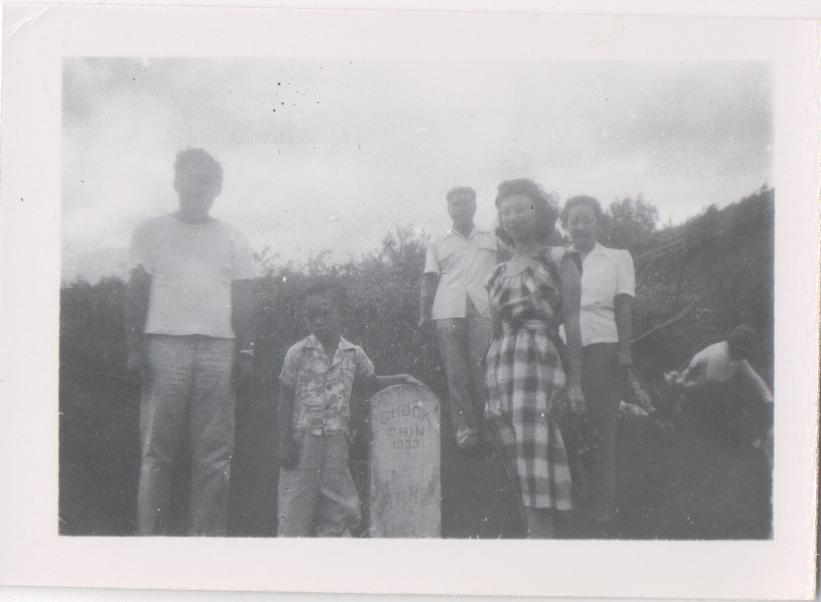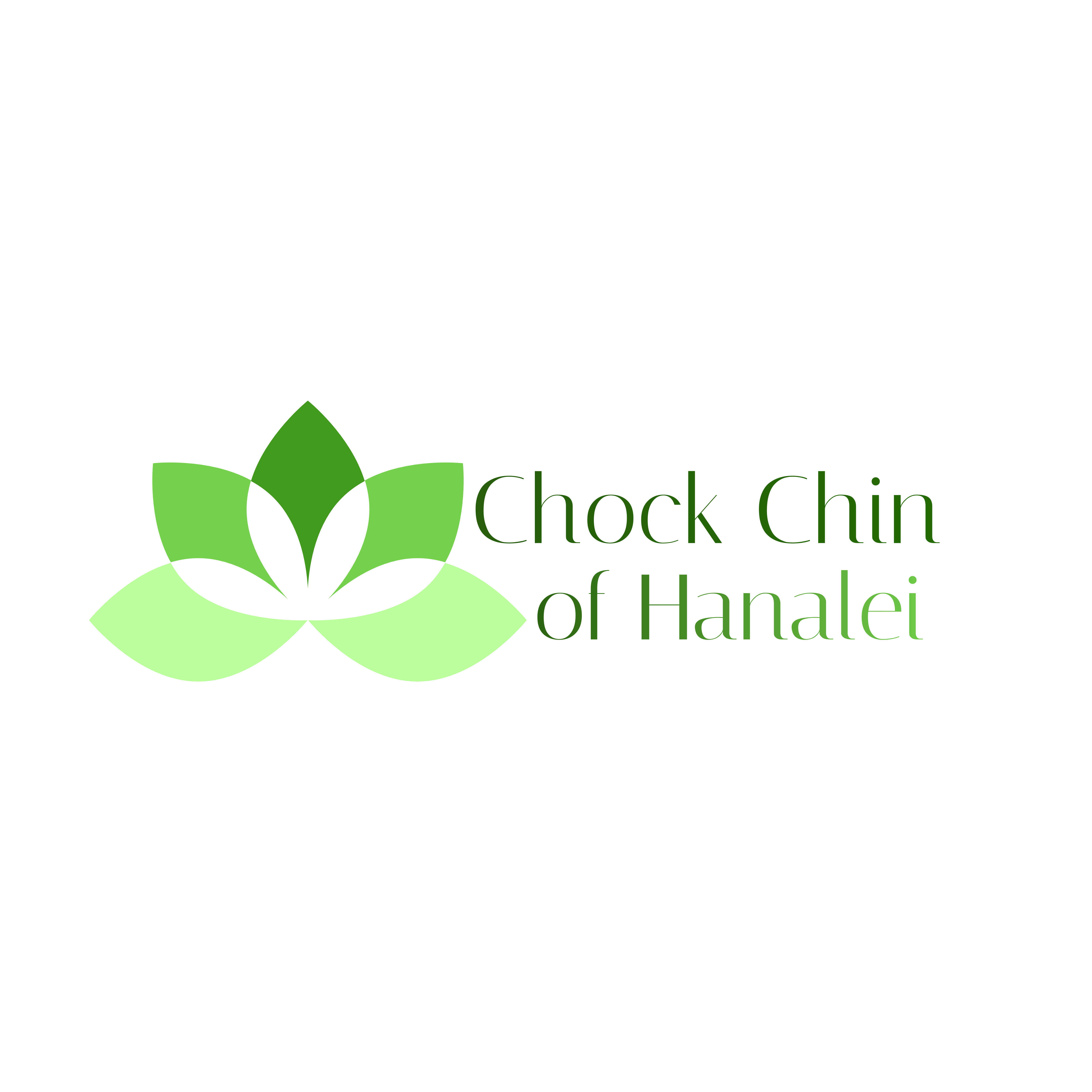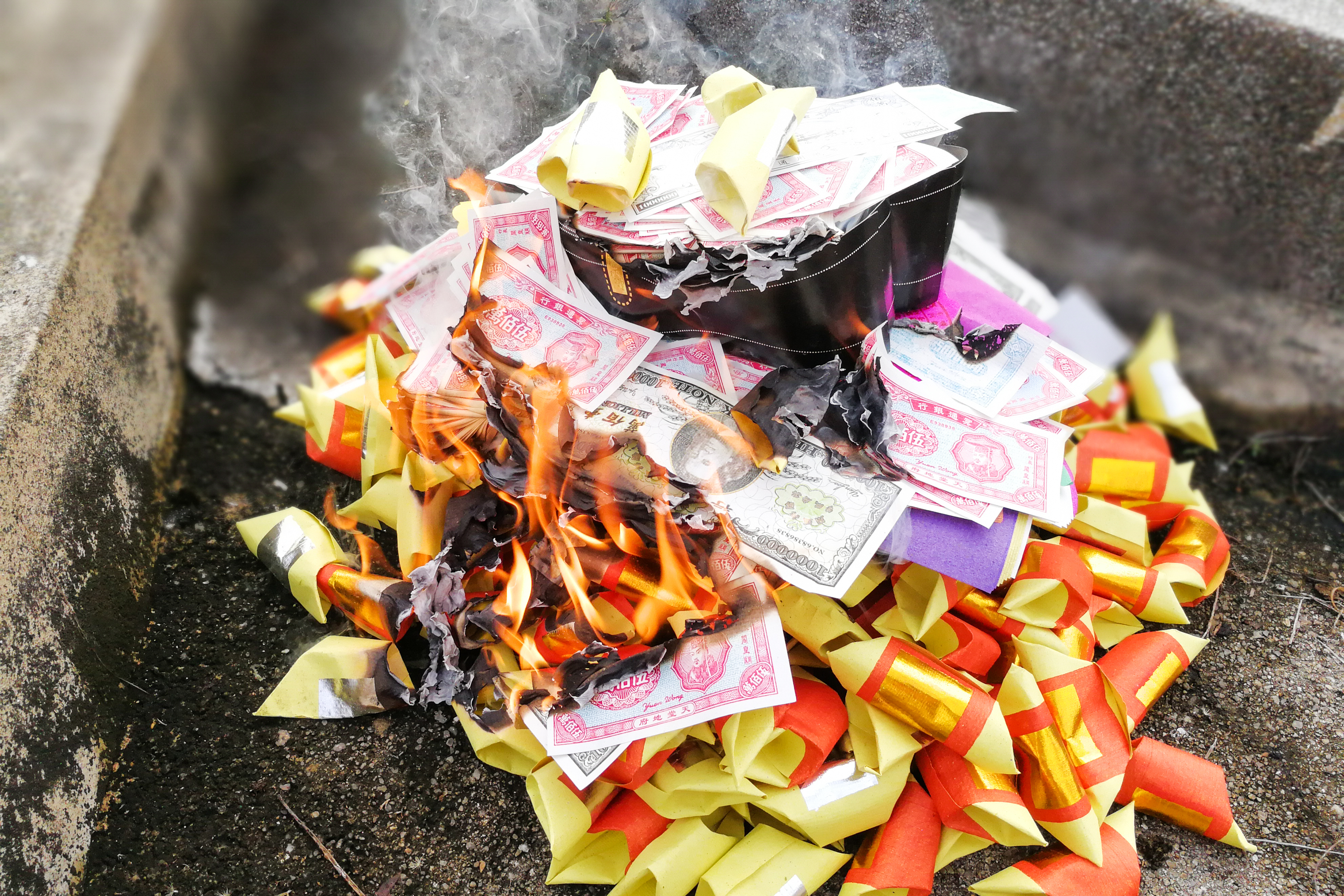Along with the entire Chinese community in Kauai (and globally), Chock Chin led his family in the annual celebration of Ching Ming. Daughter Dorothy remembers:
“When it was Ching Ming or decoration Day, Papa sometimes roasted a pig. There would be large bowls and dishes filled with whole boiled chicken, boiled pork, fried fish, crabs and duck eggs. Rice, teas, liquor, and cakes were included.
“Papa ingeniously constructed large portable food boxes with two removable trays in each, in which the dishes of food were placed. Uncle, sitting in front with Wilfred, accompanied us in the wagon to the Chinese Cemetery, a distance away at the foot of the mountain. We sat in the back with the boxes of food and all the necessary things needed for the ritual of honoring the dead.
“Often we had to clean the gravesites because there was no caretaker. Uncle was always quick in identifying the graves of Dorothy’s mother, baby brothers, and later Benjamin. He showed us how and where to place the food, the bowls of rice, tea,and liquor. Then the candles and incense were lighted and placed properly.
“One of the boys burned the firecrackers. We helped burn the squares of paper representing gold and silver money. Once we asked Uncle, “What are these shiny, colorful, smooth pieces of paper and what are the rough pieces of paper? ”
“He replied “Smooth one–silk clothes; rough one–cotton.” And he flashed that loveable irresistible smile of his. After that we were more careful in separating the pieces for burning.
“When we returned home with most of the food, Papa cut up the roast pig in portions for Uncle, our relatives, and neighbors. He also chopped some for the dinner table as Mama by that time had everything ready for us to dine.”
 Here is a photo of my father, George Chock (far left), with nephew Robert Chinn and sister Janet (in plaid dress), brother Wilfred and his wife Violet Ching Chock in background, celebrating Ching Ming at Chock Chin’s grave in Hanalei Cemetery.
Here is a photo of my father, George Chock (far left), with nephew Robert Chinn and sister Janet (in plaid dress), brother Wilfred and his wife Violet Ching Chock in background, celebrating Ching Ming at Chock Chin’s grave in Hanalei Cemetery.
About Ching Ming
Ching Ming (or Qingming) is one of the most important festivals in Chinese culture. It is also known as Clear Bright Day, Ancestors Day or Tomb Sweeping Day. The traditional ceremony is held in April, the 15th day from the spring equinox, first day of the fifth solar term of the traditional Chinese lunisolar calendar. This makes it the 15th day after the Spring Equinox, either 4 or 5 April in a given year, and marks the end of a month-long Ching Ming celebration where grave sites are tidied and families gather to worship their deceased relatives.
Ching Ming is indicated with two characters: “ching,” meaning pure or clean, and “ming,” meaning brightness.
The tradition of ancestor worship has a history in China dating back thousands of years. The Chinese have great respect for and strongly revere their ancestors. During Ching Ming, this a person honors the dead, and it is believed to bring blessings to the Chinese community and to those who dutifully pay their respects to ancestors buried in the cemetery.
During the ceremony, offerings will be placed at the cemetery altar including roast pig; poached or boiled chicken; five bowls of ceremonial dishes; various fruits; bowls of rice; and cups of tea and wine.
Additionally, red-colored candles and incense — along with paper of embossed gold and silver, symbolizing money — will be burned for the deceased to spend in the afterlife.

